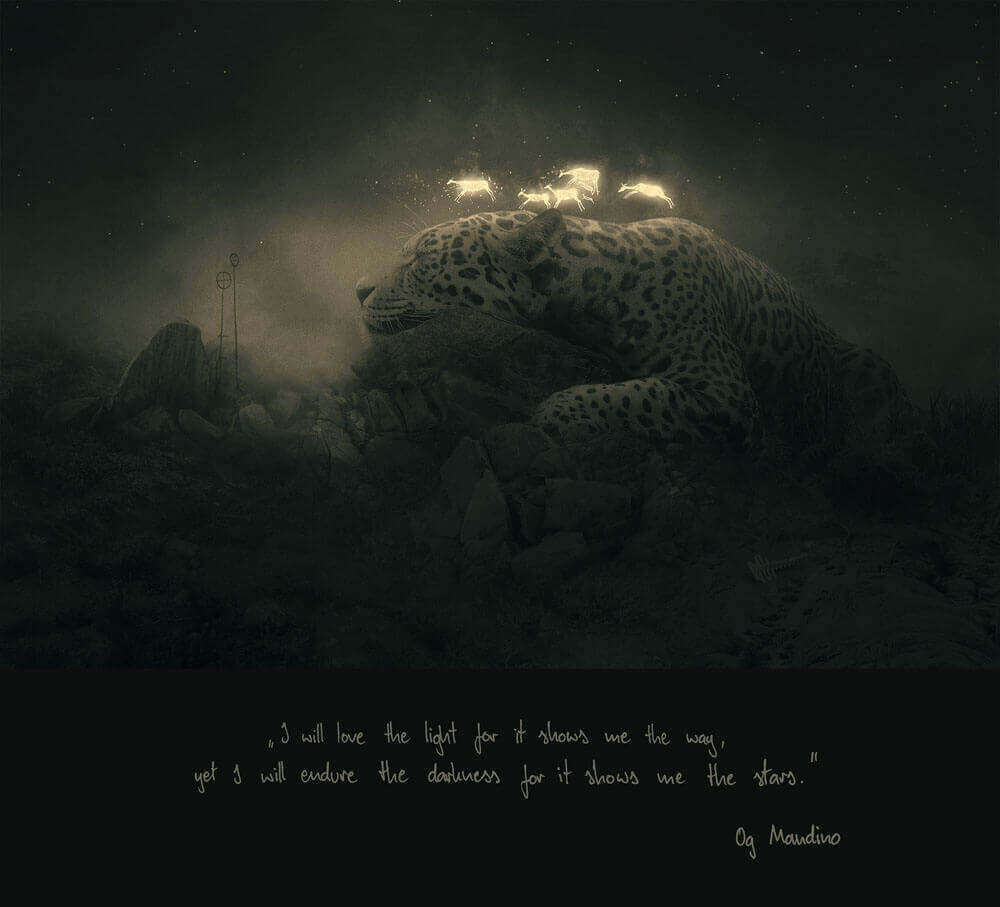
“Show me the way”, 2019, ©Dawid Planeta
For all you art fans out there, Jet-Black Gallery will now be featuring regular interviews with our favorite artists. The first artist we’d like to introduce you to is a man by the name of Dawid Planeta.
We recently interviewed the Poland-based artist David Planeta about his most recognizable series, “Mini People”. Mini People explores his personal experience with depression, visualizing his mental journey thorough dark times. This series helped spark his popularity as an artist in the United States and his Instagram account now has more than 60,000 followers whom he strives to inspire with his art.
In March, Planeta opened his solo exhibition titled “The Unknown” in Seattle, Washington. Although the show was unfortunately postponed partway through, due to the COVID-19 crisis, you can now see this collection of artworks at the venue from HERE. If you enjoyed the interview, follow Planeta on Instagram @minipeopleinthejungle. Stay safe and healthy.
— Please tell us little bit your background.
My name is Dawid Planeta. I was born in Cracow – one of the Europe’s most beautiful cities, leading centre of Polish academic, cultural and artistic life. I grew up surrounded by art, thanks to my parents who are both artists, and in close connection with nature, spending every holiday in a cabin in the woods with my family. Years later I realized how important was that time for development of my sensivity and observation skills.
To this day, nature is still my my greatest teacher and a way to find answers to the questions I have no answer to. After finishing high school I studied industrial design at Academy of Fine Arts in Cracow where I learned that working for someone, having to follow his rules is not something that works for me. It was a great challenge for my creativity to find new ways of doing things and staying within the rules and requirements at the same time.
But I knew I had to find my own way. While I was studying at university, I also worked as a teacher at a drawing and art course. Teaching others and sharing my knowledge was one of the most rewarding experience of my life, and also challenging – since nobody showed me how to do it I had to figure it out by myself – find my own way, just the way I liked it.
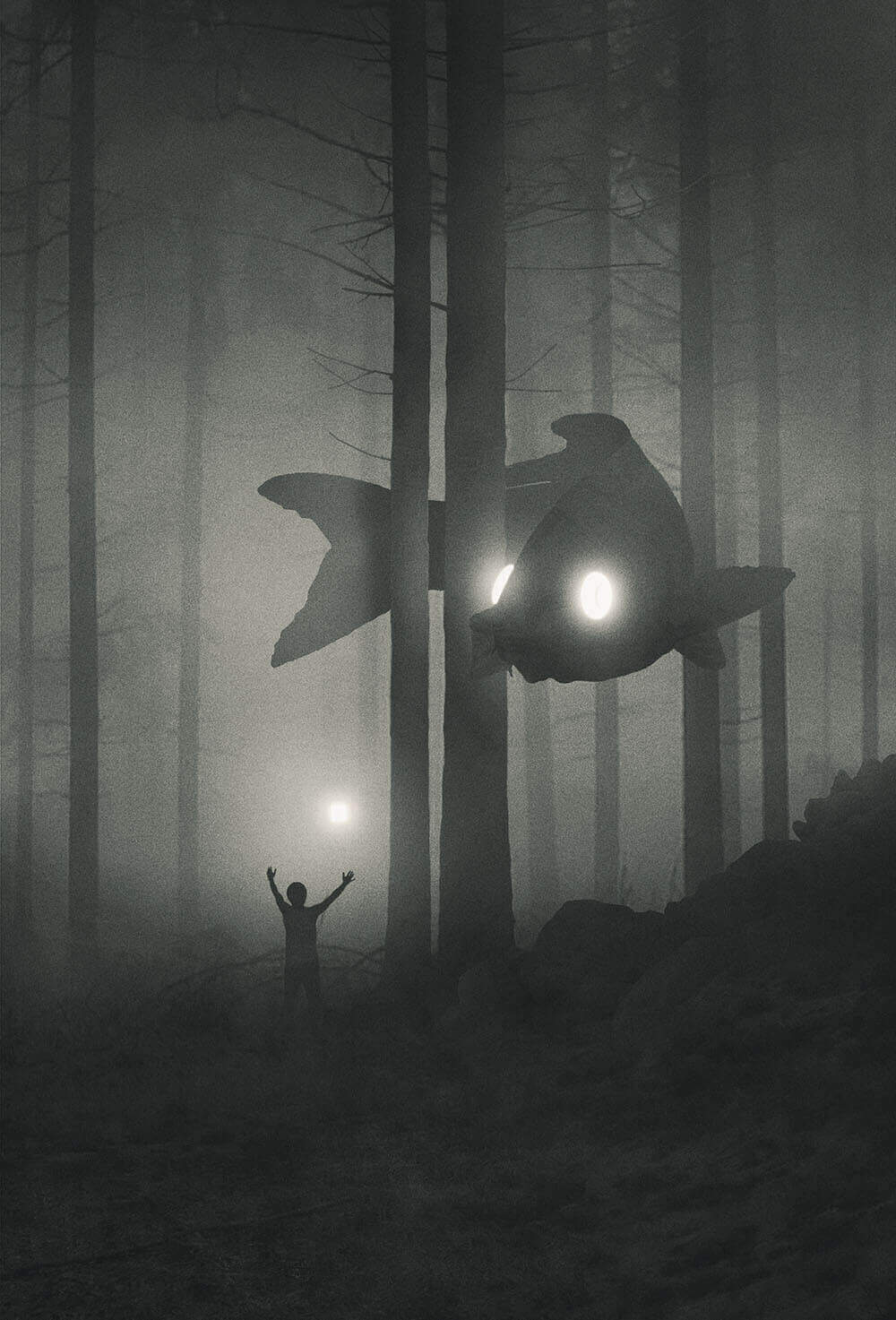 “Deep Forest”, 2017, ©Dawid Planeta
“Deep Forest”, 2017, ©Dawid Planeta
— Did you have a specific opportunity to become an artist?
I’ve been surrounded by art for as long as I can remember, but becoming an artist, or rather realising who I really am has been a long and difficult process that still continues to this day. It takes time to understand that many things I thought I wanted were not my own desires, but things imposed on me by society. The vision of happy life I had came from movies and advertisements that were constantly telling me what I need to be happy – just buy one more thing, a bigger house, a better car. Than you’ll be happy. Than you’ll be complete. The happiness in our society is always one step away.
To really become an artist you need to become aware of that and take a step back. See the world as it really is, not as you would like it to be. It takes courage not to think whether people will like what you do and just do what you love. Even though we know people like authenticity we are still too afraid to show ourselves the way we are. We pretend and hide to avoid responsibility for our life so we can blame others for our situation. But the opportunity to change is always there. Becoming an artist is to use that opportunity.
— Your most recognizable artworks are your “Mini People” series. How and when did you come up with such an incredible idea for the imagery?
I spent most of my teenage years chasing other people’s ideals and trying to live up to their expectations, but when I started to be more aware of myself it became painfully obvious that I have no idea what I want or who I am. I was lost – struggling with anxiety and depression, terrified of leaving the room because of panic attacks I often had when I went. Things I used to be passionate about now felt pointless and dull. I was overwhelmed by apathy, I felt that life has lost its meaning.
It was then when I created the first picture from the series – a fish floating between the trees in a dark forest with a small figure standing in front of it. It was the first thing in months that gave me a slight feeling of excitement. A delicate light in the darkness. A gentle breeze of fresh air. I knew I have to continue to keep that light alive. It was my chance to find a way out. To follow the light. To find myself and change my life.
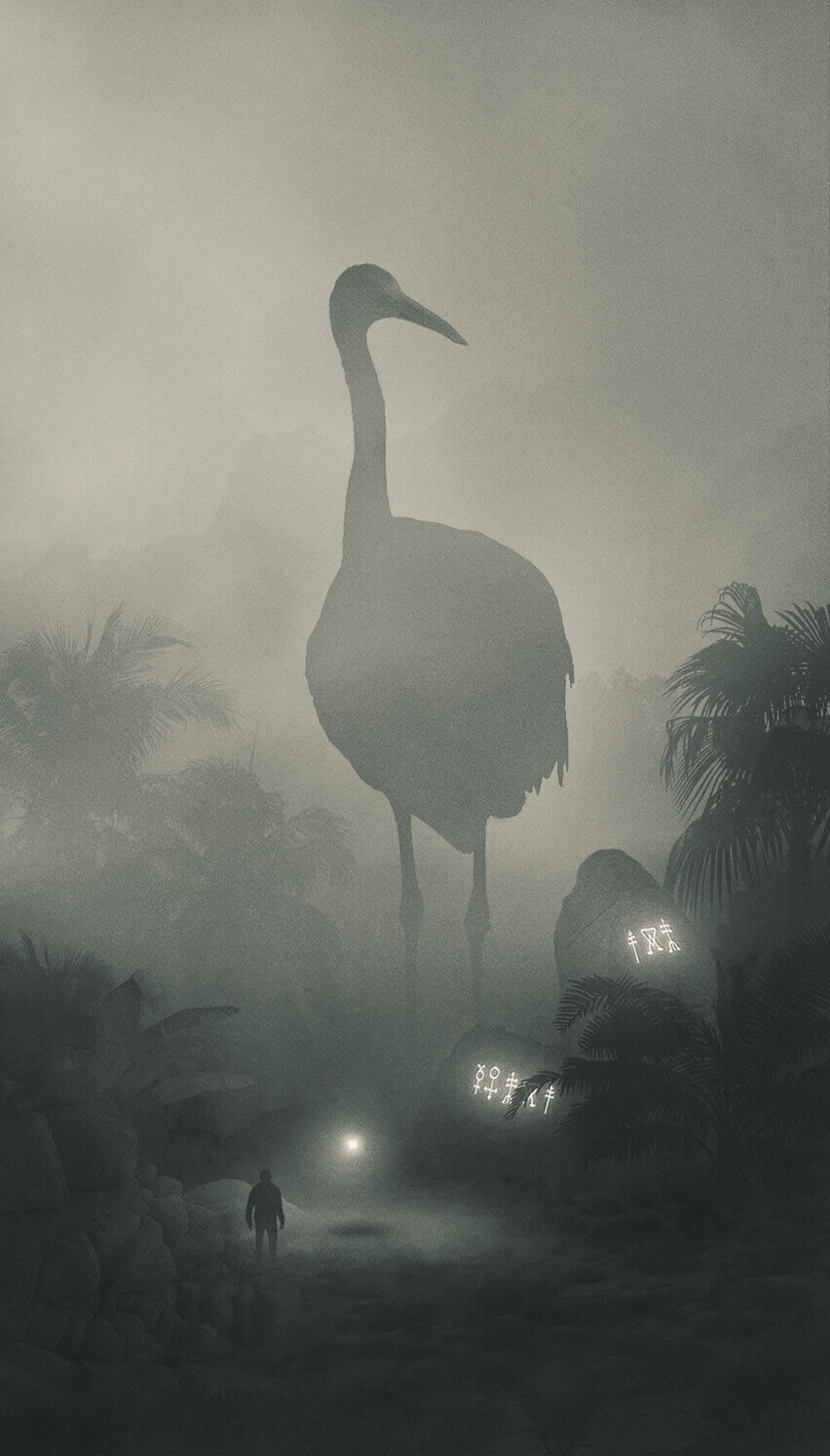 “Treasure”, 2017, ©Dawid Planeta
“Treasure”, 2017, ©Dawid Planeta
— Dark colours are used in “Mini People” series effectively. What are you thinking about when deciding on colours for your creations?
In the beginning the pictures were less complex in form and color – just black and white. After a while, a new coherent style began to form and I started to experiment with different tones to make the pictures more alive. When I create a picture I think of it as creating a space for the spirit to emerge. The space has to match the energy you want to express, otherwise it won’t come to live in your art. That’s why sometimes you see works that are “empty”, you don’t feel anything when you look at them.
When creating work of art, it’s important to remember that you don’t create it for yourself, but rather for something that is bigger than you, something that wants to find its way into this world using your art as a door. And as long as all you are concerned about is whether other people will like your art, whether it’s “good” or “bad”, the door remains closed. To open it you have to work from your heart, not from the mind. I use dark colors because that’s what make those pictures alive, that’s what invites the spirit of the unknown.
— You were born and raised in Krakow, Poland. In what ways do you think that Polish culture or customs affect your art?.
My art reaches to a place of more universal values. It’s rooted in subconsciousness, in thoughts and emotions we all share universally. It tells a story we all understand, no matter what culture we live in – a universal myth. Story of a hero, thrusted out of his ordinary world to face his fear, to win over his weakness, to find his inner strength and return transformed. This is a narrative we all go through in our lives in some form – descending into the darkness, facing challenges in life, finding the light, choosing the right way. Because of that it’s difficult to trace down specific influences that Polish culture might have had on my art.
If we look at the history of Poland, we will see that it went through many dark moments – some of those stories happened very recently and are still alive in minds of people – my parents experienced hard times of communism, my grandparents experienced the Second World War. It’s just two generations away. It takes time to make a change in people’s minds – the fear and uncertainty about the future are still deeply rooted in subconsciousness of Polish people. I think it may be something that affect my works on a deeper level. Maybe my works are my own journey through the past to face the monsters that are still very much alive.
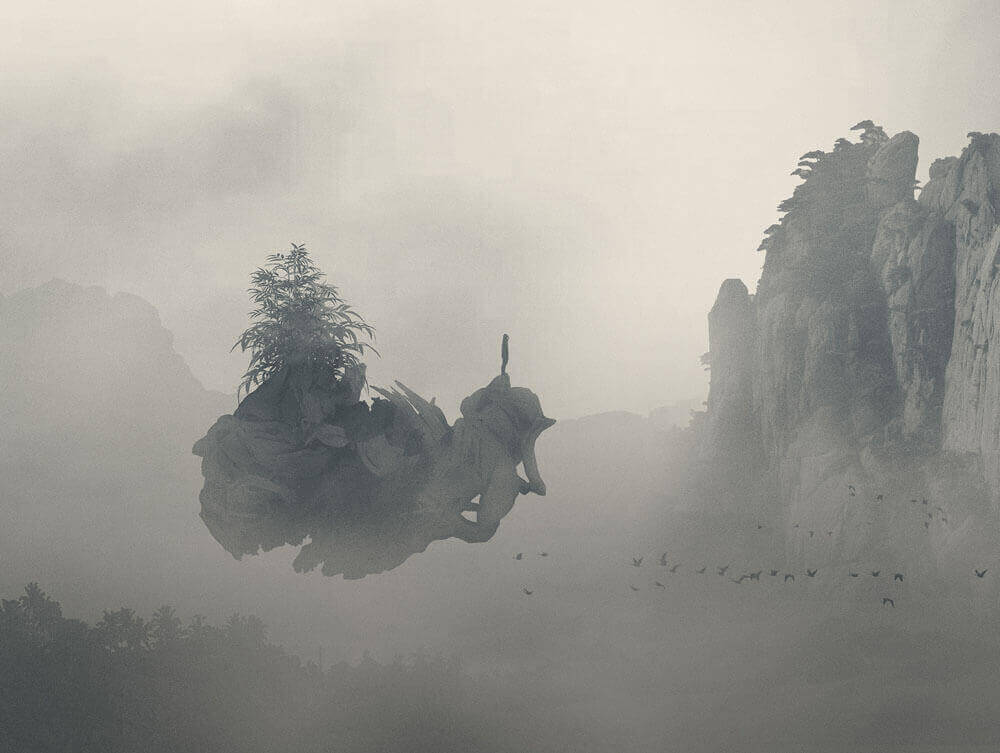 “Wisdom”, 2017, ©Dawid Planeta
“Wisdom”, 2017, ©Dawid Planeta
— You mainly create your works of art using digital technology. How did you choose this as your medium?
It took some time to realise what works best for me in terms of tools and technique. I have an education in drawing and painting, but it never felt like a right tool. In 2017 I started to experiment with traditional collage. It was the first time when I felt real excitement of expressing something real. Those pictures made me connect with emotions that I didn’t even know I had. I thought I had left them years ago. I realized I just found a way to connect with my subconsciousness. It was a very special moment. Unfortunately, those works that also foreshadow my later issues with depression have been lost – I only have photographs left.
I realized that for me the most effective way of creating is to use ready-made elements and arrange them into something new. I want to start with something already existing rather than blank piece of paper. To experiment even further I started to use Photoshop to edit my collages more freely, creating different arrangement from one set of elements, blending them more and more until they become one picture where you couldn’t distinguish individual elements. Digital tools gave me the freedom I was looking for and allowed me to find my own way of creating.
— I’d like to ask you some questions relating to Japan. What was your first impression of Japan? Do you have any specific Japanese influences that you can relate to on an artistic level such as other artists, musicians, authors, etc.?
My first encounter with Japan was when I was a kid and my father brought home a photo album “Oku Mikawa” by Shinzo Maeda. It was something new – the aesthetic and composition of those pictures were so different from what I knew. For me it was a window to a different culture, different world, different way of thinking. Some time later I saw pictures of Japanese gardens – I was really moved by the minimalistic aesthetics of it – lack of artificial ornaments and focus on recreating natural landscape as the most perfect form of beauty. It showed me the power of working with alignment with the environment rather than using it to create something completely new.
Japanese culture is very close to me also when it comes to relationship with nature – living in harmony with nature is a very fundamental thing but also quite neglected in Europe. People think about it as something we can control and use any way we want to rather than something we should respect and taking care of. I always felt deep admiration to nature, a spiritual bond, it’s a sacred place where I go to find answers, to relax, to remind myself who I really am. There are so many things that I find inspiring about Japan: beautiful traditional architecture, minimalistic interiors and music – the unique sound of Shakuhachi flute which can express more in with a few sounds than a whole orchestra, or a gentle and calming sound of koto. Although Japan is still full of mystery to me, it’s a place of great inspiration that had a big influence on my art and the way I live.
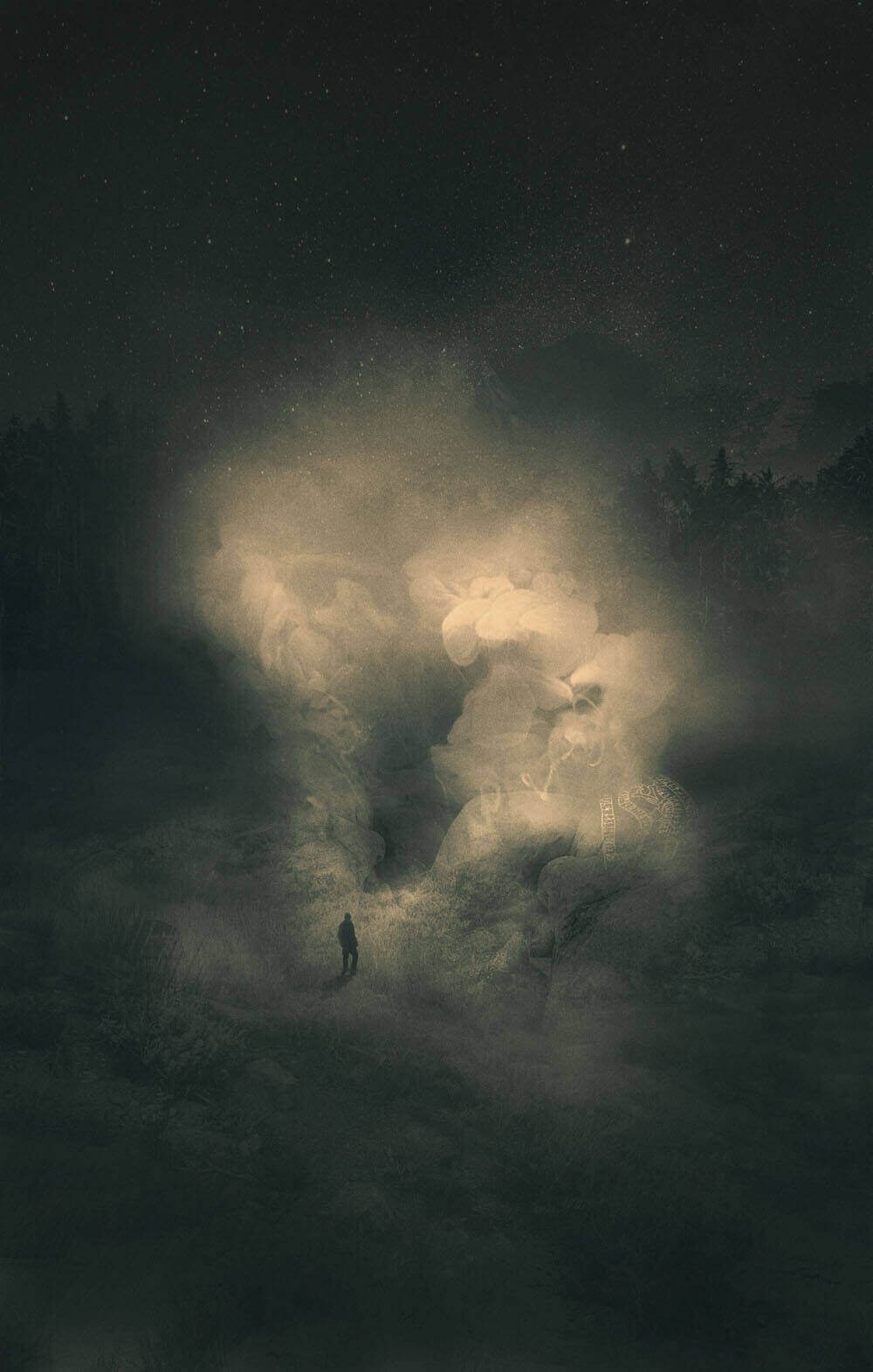 “Unknown”, 2018, ©Dawid Planeta
“Unknown”, 2018, ©Dawid Planeta
— Could you tell us if you have any exciting plans with your art coming up in the near future?
My plan for the future is to keep exploring the path I decided to go in life, to keep creating and sharing my art with others. I wish to share more than just art – I think that my experience of going through depression and then using it to create something beautiful can be an inspiration to many people. I would like to connect more with people who are looking for a guidance on their path to help them find themselves. I usually don’t have specific plans, but rather a direction I want to go. A dream that keeps me going. One of the things I would like to do in the future is creating a residency for artists – a place where anyone could come and spend time finding out what is it that he really wants in life.
Dawid Planeta
Polish artist and graphic designer Dawid Planeta summons gigantic beasts in his series of grayscale illustrations set in a mysterious land. Titled Mini People in the Jungle, his work explores the artist’s personal experience with depression, visualizing the mental journey through dark times. Planeta explains, “It’s a story of a man descending into darkness and chaos in search of himself.”
https://www.instagram.com/minipeopleinthejungle/
https://www.behance.net/dawidplaneta
